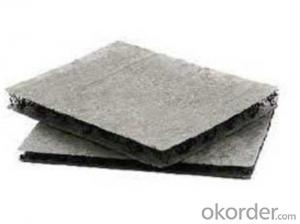The demand for coir geotextile, a natural and sustainable fabric, has been increasing in the construction and landscaping sectors. It is fashioned from the fibrous shell of a coconut and can be used for many things due to its versatility. This paper will talk about coir geotextiles, their use and why they are popular today.
I first met with coir geotextile while working on my friend’s garden during one of our landscape projects. The design and blend with nature made it look distinctive hence I realized how worthwhile it was to find out more about this material.
Eco-Friendly and Sustainable
Coir geotextile serves as an eco-friendly option to synthetic forms of geotextiles. As such, they are biodegradable hence do not cause any form of pollution to the environment. This is especially important given that sustainability concerns have become central issues in global discourse today. In addition to reducing waste, coir geotextile can also stimulate recycling of natural resources.
Versatile Applications
One aspect of coir textiles that is truly amazing is their plethora of applications. These include erosion control, soil reinforcement, horticulture and agriculture among others. Coir textile work like weed mats in gardens and as soil stabilizers in landings.Likewise, in construction sites; they act as sieves and barriers making sure different layers remain separate but well drained.
Erosion Control
A lot of constructions or landscape activities experience erosion problems at some point.Coir geotextiles provide a viable answer to this problem. Because they have sticks on them which means that solid particles retain together this holds back water from taking away soil out more than usual.I personally witnessed how effective these products were when controlling water flow on my sloped bed where there was no washing off by the rainwater.
Soil Reinforcement
The other application for coir textiles is soil reinforcement. They help keep the soil from giving way and falling apart. This is very important in areas with poor soils or where construction needs to be done on unstable ground. The strength and durability of coir textiles make them perfect for this use.
Weed Barrier
An essential task in landscaping is the control of undesired growth of weed.Coconut matting can be used as a solution to weed problems, ensuring that they are not able to come up through the surface of the earth.The fact that it also helps one preserve cleanliness by being able to prevent entry of unwanted substances.These days I have been managing my waterlogged garden using these mats which have proved their worth.
Drainage and Filtration
Proper drainage and filtration are key considerations when undertaking any construction or landscape project.Coir geotextiles can be put at the bottom stage so as to sieve off water but still let sediments pass through.This helps maintain stable soils while keeping water from building up resulting into floods or other related cases.Ideal material for such situations is coir due to its natural properties.
Installation and Maintenance
The process of putting coir geotextiles in place is fairly easy and direct. They can be thinly cut out to fit into any desired space. In addition, not much maintenance is required since they are resilient to insects and need no special care, hence making them manageable for both homeowners and experts.
Cost-Effective Solution
Coir geotextiles are often comparatively cost-effective compared to synthetic ones. They are constructed from a renewable product and their manufacturing costs are lower. This makes the material appealing to people who want an affordable option without sacrificing quality or performance.
Conclusion
It is indeed amazing that coir geotextile has found uses in many spheres. Its eco-friendliness, flexibility, and affordability have made it popular with professionals as well as home owners. From experience, I confidently state that these products add value to any building or landscaping project ever undertaken using them personally. So next time you plan your works, think about incorporating coir geotextiles in your project design; you will not regret it!







